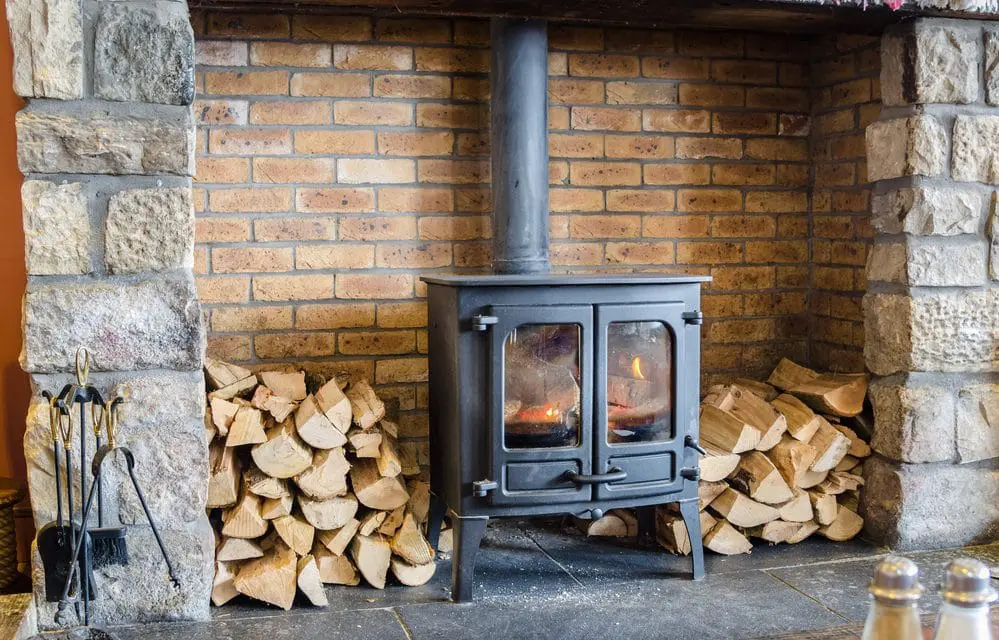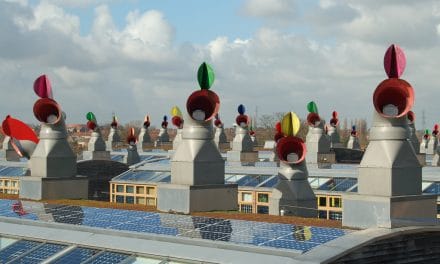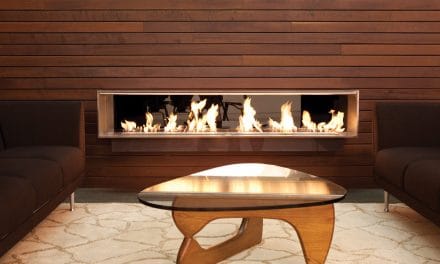There’s nothing quite like the warm glow of a fire on a chilly night. A gas fireplace or furnace heating system may warm the body, but a wood fire warms the spirit. Traditional fireplaces, however, can be resource demanding, messy, and inefficient. So what’s the best way to experience the magic of a fire in your home? Read on for our complete guide to wood-burning stoves.
Benefits
Sustainable. Homeowners across the globe are turning to wood-burning stoves as an eco-friendly alternative to fireplaces and fossil fuel-dependent home heating. Since wood is considered a renewable resource, unlike the fossil fuels commonly burned to heat homes, wood-burning stoves provide a highly sustainable heating alternative.
Money-saver. The cost of heating your home is higher than ever. Non-renewable resources, like propane, oil, and coal, are surging in price due to the dangerous combination of increased demand and dwindling resources. By zone-heating your home’s main living area with a wood-burning stove, you’ll save money by cutting down on the high gas bills in the deep, dark winter months. You can be especially sure of your cost savings by purchasing an EPA-certified stove (see below), as they burn more efficiently and use up to 1/3 less firewood than traditional models. This makes a wood-burning stove a great option for those of us who are trying to cut costs while living an eco-conscious lifestyle.
Wood-Burning Stoves FAQs
#1 Can Wood-Burning Stoves Really Help Conserve Energy?
The short answer: Absolutely! It’s not surprising that heating with wood is significantly less expensive than relying on electricity, oil, or natural gas. But what would the energy and cost savings really look like? You can slash your energy costs by 20 to 40 percent just by zone-heating your home with a wood stove. To put that in perspective, someone with a monthly home heating bill of $100 will save $20-$40 a month, just by switching to wood-burning home heating. Imagine the kind of savings that would mean over time.
#2 How efficient are wood-burning stoves?
If you think all wood-burning stoves today perform the same as those used by your grandparents decades ago, think again. New EPA-certified wood stoves have impressively low emission levels and are also highly energy-efficient (nearly twice as efficient as a traditional fireplace!). EPA-certified models are at least 60 percent efficient, with some models boasting an 80 percent efficiency rate, a noteworthy improvement over the low-tech, non-certified models of decades past, typically with 50 percent or lower efficiency rates. Choose an EPA-certified stove to know beyond a doubt that your stove is both eco-friendly and energy-efficient.
#3 But wait, doesn’t burning wood cause CO2 emissions?
Not all wood stoves are built alike. There’s simply no comparison between decades-old wood-burning stoves and newer stoves manufactured under EPA performance standards. Older wood stoves require a constant supply of fresh logs to heat a room and generate as much as 70 percent more air pollution, hence their notorious reputation for smoking up the inside of homes, as well as the outside.
Thanks to the EPA’s new emission standards, the days of inefficient and smoky wood-burning stoves are far behind us. Since the late 1980s, both catalytic and non-catalytic wood-burning stoves have been manufactured under the EPA’s mandatory smoke emission limits of 4.1 and 7.5 grams of smoke per hour, respectively (we’ll cover the difference between catalytic and non-catalytic stoves later). The emissions standards put a much-needed cap on harmful CO2 and small particle emissions of wood-burning stoves, challenging stove manufacturers to create more advanced wood-burning technologies to meet the standards’ demands.
#4 Is wood a sustainable fuel resource?
Wood has another leg up on fossil fuels – it’s a completely renewable resource. Fossil fuels like natural gas and coal come in a definitively limited supply. In other words, once we’re out, we’re out. And if we keep consuming fossil fuels at our current rate, we may run out much quicker than we thought (some sources estimate that our oil deposits will be exhausted by 2052!). Wood is a renewable resource, meaning it will never run out, so long as sustainable forestry practices are in place. And fortunately, sustainable forestry is at an all-time high in the U.S. There are more trees growing on U.S. soil than there were a century ago, largely due to the U.S. Forest Service’s requirements that wood harvesters plant more trees than they harvest. So even if you plan to fuel your stove using purchased logs, you can be sure that your method of home heating hasn’t contributed to global warming or dangerous deforestation practices.
#5 How is a stove’s heating capacity measured?
A wood-burning stove’s heating capacity is measured in Btu, or British thermal units. Typically, a larger Btu rating represents a larger space that the stove can provide heat for. For example, a stove rated at 42,000 can provide enough heat for a 1,300 sq. ft. home, while a 2,000 sq. ft. home would be better served by a 60,000 Btu model. Discuss your home’s heating needs with your wood stove manufacturer as well as with your installation technician to ensure you select the perfect stove for your space.
Types of Wood-Burning Stoves
There are a lot of different wood-burning stove styles, but when it comes to construction and design, wood stoves typically fall into two categories: catalytic and non-catalytic, or “cat” and “non-cat” for short.
Catalytic. Catalytic stoves send their smoky exhaust through a ceramic “honeycomb” catalyst, like the catalytic converter on a car, which burns off the gasses and particles, emitting fewer pollutants as a result. Cat stoves are typically more efficient than non-cat stoves, with longer burn times and less heat loss. They do require more maintenance, however, since the catalysts need to be replaced every few years.
Non-catalytic. As the name implies, non-catalytic stoves lack this catalyst mechanism. But non-cat stoves still have a few measures in place to reduce emissions, such as interior baffles which create a longer flow path for the hot exhaust; the longer combustion time causes more of the gasses and particles to burn off. The EPA’s emissions standards for non-cat stoves (7.5 grams of smoke per hour) is higher than the 4.1 g/h standard of cat stoves, reflecting the inevitable deterioration of catalytic stoves’ catalysts; by the time the catalysts are due for replacement, emissions will no doubt have exceeded the 7.5 g/h standard of non-catalytic models.
To learn more about stove efficiency, additional benefits of modern wood stoves, and what to look for when buying an EPA-certified model, check out SCHOTT’s Wonders of Wood Stoves infographic.

Wood-Burning Stove Tips
We know the prospect of heating your home with an eco-friendly wood-burning stove is exciting, but before you make your wood stove selection, there are a few things to consider.
Evaluate Your Chimney. A wood-burning stove can’t function without a chimney! Enlist the help of a certified chimney service to determine whether your existing chimney can be used for your new wood-burning stove. If your home’s chimney passes the test, you’re likely to have a more limited selection of stoves to choose from, since you’ll need to choose a stove that will work with the chimney that’s in place. And most importantly, making use of your home’s current chimney rather than building a new one will save you a lot of time and money.
Hire a Certified Technician. The age-old advice, “Don’t play with fire,” can be taken in a very real and literal sense when it comes to wood-burning stoves. An improperly installed wood stove could mean disaster for your home and the safety of your family. Unless you have plenty of experience with both interior and exterior remodeling and local fire codes, it’s your safest bet to hire a skilled and certified professional to make sure your stove is installed properly.
Choose Proper Placement. Your certified professional will likely know all there is to know about where and how to place a wood stove in your home. But just so you know, the National Fire Protection Association (NFPA) recommends that wood stoves be placed a safe distance away from flammable walls and materials. Your stove should be backed by and seated on a non-combustible surface, like stone, tile, or brick.
Burn the Right Wood. We’re not talking about aspen vs. pine in this case. The type of wood matters less than how the wood has been prepared for burning. All wood used in your stove should be correctly dried or “seasoned” before use. This is because properly seasoned wood makes for the hottest, cleanest fires with the least amount of creosote buildup, a major culprit of dangerous chimney fires, according to the Chimney Safety Institute of America.
Burning the right wood means thinking one year ahead. Regardless of the type, all wood should be set to dry and season for at least one year before burning, with the best-burning conditions achieved after two to three years of seasoning. So if you’re planning to harvest wood locally, make sure you cut and split your wood this year for next year’s burning. Stack split wood to dry in a shed or sheltered wood enclosure. A tarp is not ideal, as it allows in moisture and prevents proper curing of the wood.








